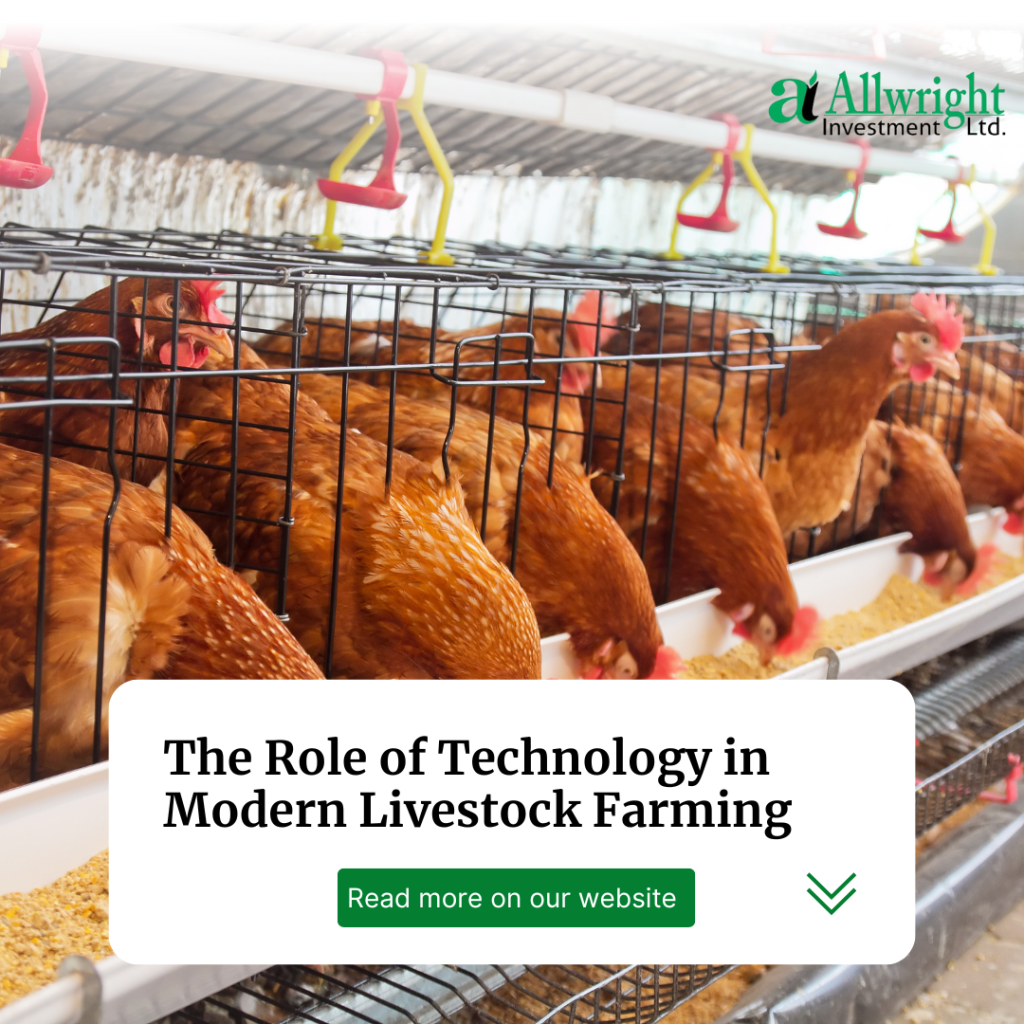
The Role of Technology in Modern Livestock Farming: Revolutionizing Animal Care and Farm Management
The agricultural industry has come a long way from traditional farming methods, and technology is now at the forefront of transforming livestock farming. From improving animal health to optimizing farm operations, innovative technologies are helping farmers work smarter, not harder. Whether you’re managing a small family farm or a large commercial operation, embracing these advancements can lead to increased productivity, sustainability, and profitability.
In this blog post, we’ll explore the latest technological innovations in livestock farming and how they’re revolutionizing the way we care for animals and manage farms.
1. Precision Livestock Farming (PLF)
Precision Livestock Farming uses sensors, cameras, and data analytics to monitor animals in real-time. These systems track health, behavior, and productivity, allowing farmers to make data-driven decisions.
Examples:
- Wearable devices that monitor heart rate, temperature, and activity levels.
- Automated feeding systems that adjust rations based on individual animal needs.
- Cameras and AI to detect early signs of illness or lameness.
2. Automated Milking Systems
Robotic milking systems have transformed dairy farming by automating the milking process. These systems allow cows to be milked on their own schedule, improving animal welfare and milk production.
Benefits:
- Reduced labor costs.
- Consistent milking routines.
- Real-time data on milk quality and yield.
3. Smart Feed Management
Technology is revolutionizing how livestock are fed. Automated feeders and precision nutrition systems ensure animals receive the right nutrients at the right time, optimizing growth and health.
Examples:
- Feed mixers with GPS and sensors to create precise rations.
- Apps that track feed inventory and consumption.
- Systems that analyze feed efficiency and adjust diets accordingly.
4. Health Monitoring and Early Disease Detection
Early detection of diseases is critical in livestock farming. Advanced technologies like thermal imaging, wearable health monitors, and AI-powered diagnostics help farmers identify health issues before they become serious.
Examples:
- Thermal cameras to detect fever or inflammation.
- Wearable collars or ear tags that monitor vital signs.
- AI algorithms that analyze behavior patterns to predict illness.
5. Drones and Remote Monitoring
Drones are becoming an essential tool for large-scale livestock operations. They can monitor herds, check fences, and even deliver supplies to remote areas.
Uses:
- Herd monitoring and counting.
- Inspecting pastures and water sources.
- Delivering vaccines or medications to hard-to-reach areas.
6. Blockchain for Traceability
Consumers are increasingly demanding transparency in food production. Blockchain technology enables farmers to track and share data about their livestock, from birth to market.
Benefits:
- Improved food safety and quality assurance.
- Enhanced trust between farmers and consumers.
- Streamlined supply chain management.
7. Climate-Controlled Housing
Modern barns and housing systems are equipped with climate control technology to ensure optimal living conditions for livestock. These systems regulate temperature, humidity, and ventilation, improving animal comfort and productivity.
Examples:
- Automated ventilation and cooling systems.
- Heated flooring for young animals.
- Sensors that monitor air quality and adjust settings in real-time.
8. Genetic Advancements
Advances in genetic technology are helping farmers breed healthier, more productive livestock. Tools like genomic testing and selective breeding programs allow farmers to make informed decisions about their herds.
Examples:
- DNA testing to identify desirable traits.
- Embryo transfer and artificial insemination for genetic improvement.
- Breeding programs focused on disease resistance and feed efficiency.
9. Farm Management Software
Farm management software is streamlining operations by centralizing data and automating tasks. These platforms help farmers track everything from animal health records to financials.
Features:
- Inventory management.
- Breeding and calving records.
- Financial planning and reporting.
10. Renewable Energy Solutions
Sustainability is a growing focus in livestock farming, and technology is playing a key role. Solar panels, wind turbines, and biogas systems are helping farms reduce their environmental impact and energy costs.
Examples:
- Solar-powered water pumps and electric fences.
- Biogas digesters that convert manure into energy.
- Energy-efficient lighting and equipment.
In Conclusion
Technology is reshaping the future of livestock farming, offering solutions to some of the industry’s biggest challenges. By adopting these innovations, farmers can improve animal welfare, increase efficiency, and contribute to a more sustainable agricultural system.
While the initial investment in technology can be significant, the long-term benefits often outweigh the costs. As the industry continues to evolve, staying informed and open to new tools will be key to staying competitive.
What technologies have you implemented on your farm, and how have they impacted your operations? Share your experiences in the comments below!

Leave a comment
You must be logged in to post a comment.